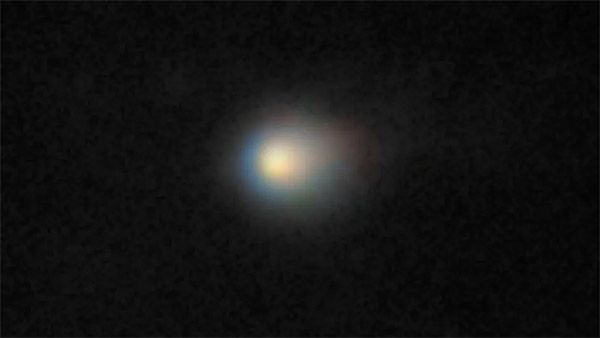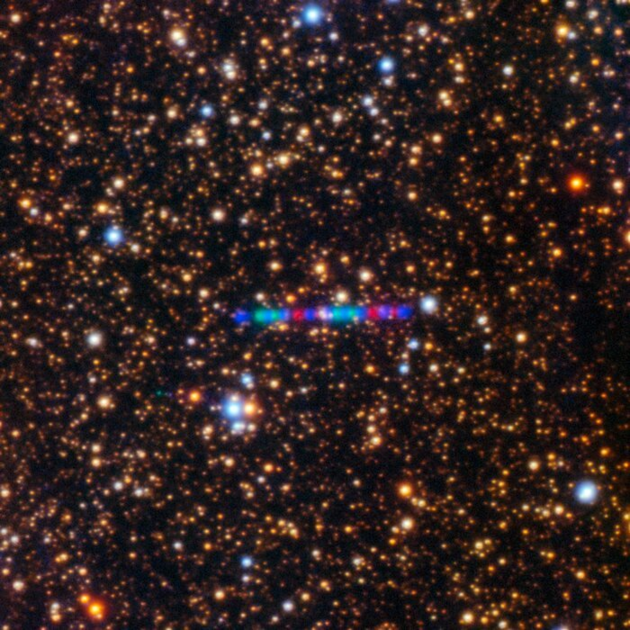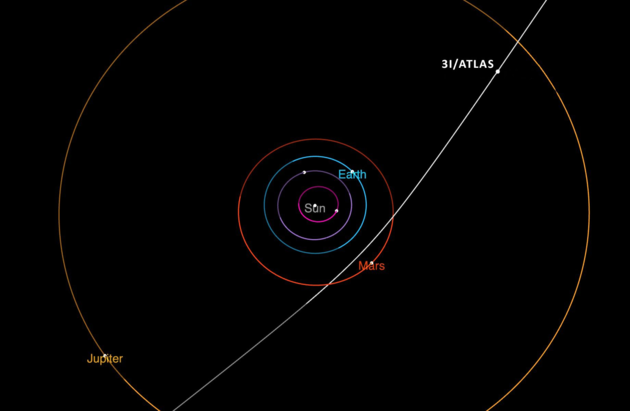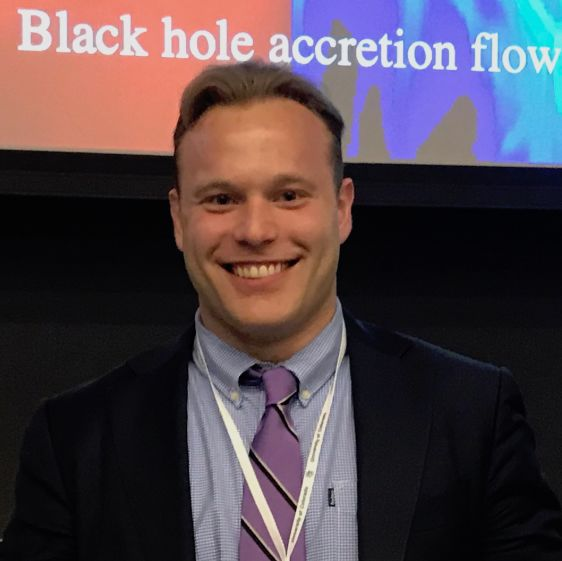
3I/ATLAS observed by the Gemini North Telescope (Photo/International Gemini Observatory)
In July 2025, an uninvited "visitor" sliced through the quiet of our Solar System at an astonishing speed of 210,000 kilometers per hour.
The object, officially named 3I/ATLAS, is the third confirmed "interstellar visitor" to enter the Solar System — after 2017's 'Oumuamua and 2019's Borisov. Its arrival has triggered an intense scientific discussion over its true identity.
Avi Loeb, an Israeli-American theoretical physicist specializing in astrophysics and cosmology and a professor of science at Harvard University, has put forward a startling hypothesis: 3I/ATLAS could be an alien probe disguised as a comet.
In an interview with National Business Daily (NBD), Loeb laid out at least six "anomalies" he believes cannot be easily explained by traditional comet models.
The mainstream scientific community, however, remains cautious. Darryl Seligman told NBD that scientists overwhelmingly consider 3I/ATLAS to be an interstellar comet. Seligman is the lead author of the first quantitative study of 3I/ATLAS and an NSF Astronomy and Astrophysics Postdoctoral Fellow.
Professor Li Jianyong from the School of Atmospheric Sciences at Sun Yat-sen University, who has participated in multiple NASA deep-space missions, told NBD, "3I/ATLAS passing through our Solar System is like a traveler passing through our city. It gives us the chance to meet them, learn about their hometown, and hear stories from their journey."
So is this "interstellar visitor" a natural messenger carrying the "DNA" of another star system — or a silent technological artifact cruising past our world? And how should humanity respond when the cosmic “mystery box” is opened?
A 210,000 km/h Mystery: Where Did the Third Interstellar Visitor Come From?

3I/ATLAS observed by the Gemini North Telescope (Photo/International Gemini Observatory)
On July 1, the ATLAS survey telescope in Río Hurtado, Chile — funded by NASA — first reported the detection of a comet from interstellar space.
Initially labeled A11pl3Z, it was later officially designated 3I/ATLAS. The "3" denotes it as the third such object ever detected; the "I" stands for "interstellar". Some studies suggest it may originate from a stellar system nearly twice as old as our Sun, making it the oldest comet humanity has ever observed.
Astronomers quickly identified its interstellar identity thanks to its unusual orbital path and extraordinary speed. 3I/ATLAS follows a hyperbolic trajectory with an eccentricity of about 6.2 — unlike the elliptical or near-parabolic orbits typical of Solar System bodies.
Its inbound velocity is a staggering 60 kilometers per second — faster than both 'Oumuamua and Borisov — meaning it is not bound by the Sun’s gravity.
It may also be unusually large. Early estimates put its diameter at 10–20 kilometers, with some astrophysicists suggesting it could be as wide as 40 kilometers.
As of now, according to TheSkyLive, 3I/ATLAS is near Jupiter’s orbit, about 400 million kilometers from Earth and 600 million kilometers from the Sun. It is expected to reach its closest point to the Sun (~210 million kilometers) around October 30, before receding. Around New Year 2026, it will be nearest to Earth at 270 million kilometers away, then pass Jupiter’s orbit in March and exit the Solar System.
Avi Loeb Points to Six "Anomalies" Constructing the Alien Probe Hypothesis

Avi Loeb (Photo/Harvard University)
About the nature of this "interstellar visitor", professor Avi Loeb’s controversial view has drawn widespread attention. He argues that 3I/ATLAS exhibits several "anomalies" that are difficult to explain using conventional comet models, leading him to put forward a bold hypothesis: it could be a product of an extraterrestrial civilization — and might even "attack" Earth in November 2025.
This is not the first time Loeb has made such a claim. In October 2017, he suggested that 'Oumuamua could be a light-sail spacecraft or probe built by an alien civilization.
While Loeb's remarks are often provocative, his academic credentials are beyond dispute. Before turning his focus to the search for extraterrestrial life, he published more than 400 high-impact papers in hard-core fields such as black holes, the early universe, and galaxy formation, earning a distinguished reputation in the academic community. He served as chair of Harvard University’s Department of Astronomy from 2011 to 2020 and was the founding director of Harvard’s Black Hole Initiative. In December 2012, TIME magazine named him one of the 25 most influential people in space.Loeb's controversial view has drawn attention.
In response to NBD, Loeb elaborated on "anomalies" of 3I/ATLAS that made him construct the alien probe hypothesis:
1.The retrograde orbital plane (defined by the orbital angular momentum vector) of 3I/ATLAS around the Sun lies within 5 degrees of that of Earth - the so-called ecliptic plane. The likelihood for that coincidence out of all random orientations is 0.2%. For its orbital parameters, 3I/ATLAS is synchronized to approach unusually close to Venus (0.65au where 1au is the Earth-Sun separation), Mars (0.19au) and Jupiter (0.36au), with a cumulative probability of 0.005% relative to orbits with the same orbital parameters but a random arrival time.
2.The brightness of 3I/ATLAS implies an object that is ~20 kilometers in diameter (for a typical albedo of ~5%), too large for an interstellar asteroid.
3.No spectral features of cometary gas are found in spectroscopic observations of 3I/ATLAS. The detected reddening of reflected sunlight could originate from the surface of the object. Related data can be found here and here. The fuzz observed around 3I/ATLAS (see images here, here and here) is inconclusive given the motion of the object and the inevitable smearing of its image over the exposure time.
4.3I/ATLAS achieves perihelion on the opposite side of the Sun relative to Earth. This could be intentional to avoid detailed observations from Earth-based telescopes when the object is brightest or when gadgets are sent to Earth from that hidden vantage point.
5.The optimal point for a reverse Solar Oberth maneuver to become bound to the Sun is at perihelion. In an Oberth maneuver, the thrust of a spacecraft is applied at its maximum orbital speed, namely at periapsis, so as to maximize the resulting change in kinetic energy. This applies both to accelerating to achieve Solar System escape, or alternatively to slow down from a high speed (a `reverse Oberth maneuver’) in order to break, stay bound to the Sun and potentially visit a planet like Earth. It is this optimal breaking point for 3I/ATLAS that is obscured from our view by the Sun.
6.The velocity thrusts needed for launches of gadgets out of 3I/ATLAS to intercept Venus, Mars, or Jupiter are smaller than 5 kilometers per second, achievable by intercontinental ballistic missiles.
Scientific Counterpoint: 3I/ATLAS Shows Classical Cometary Features

This is the trajectory of 3I/ATLAS as it travels through the solar system, where it will reach its closest point to the Sun in October. (Photo/NASA, JPL)
In response to Professor Loeb's hypothesis, the astronomical community — especially researchers directly involved in observing 3I/ATLAS — have taken a more cautious stance.

Darryl Seligman (Photo/Interviewee's Personal Website)
Darryl Seligman told NBD unequivocally that almost every scientist actively working on 3I/ATLAS agrees that it is a comet.
He explained that the deep images that they obtained from telescopes show fuzzy features, which is the primary classical way of identifying cometary activity. Asteroids are point sources while comets appear fuzzy. There are ways in which they quantify this "fuzziness", and the most important measurement which has been reported is that the light from 3I/ATLAS is more extended than how the stars look.
With regard to Loeb's saying of lacked cometary gas, Seligman said, "We have not detected cometary gas signatures but that's exactly what we expect for a comet which is weakly active out around Jupiter. It's very difficult to measure production rates of ices sublimating in comets, much more difficult than just detecting fuzziness in the images and seeing activity. That takes very sensitive measurements, and the object needs to be bright. Typically, you start measuring production rates spectroscopically when a comet is much closer to the sun, so we should be able to make those measurements in the upcoming months."

Li Jianyong also told NBD that while he appreciates Loeb's boldness, "current observational data show no obvious anomalies".
Li added that interstellar objects can enter from any direction at any speed, so 3I/ATLAS's orbit is not unusual. Its appearance — with coma and tail — matches that of Solar System comets. A genuine alien artifact, he argued, should differ markedly from natural bodies in many fundamental properties.
Preparing for a Real "Interstellar Visitor"
Although the consensus points to a comet, Loeb insists his role is to highlight anomalies worth investigating.
He said he views science as the privilege to learn, without pretending to know the answer in advance. "With a sense of humility, scientists have the privilege of letting evidence rather than popular opinions guide them."
Li agrees that such debates are normal and healthy, provided conclusions are reached cautiously and rigorously.
Loeb likens humanity's meeting with an interstellar visitor to a "blind date": "It's prudent to listen to the other side before speaking. We must first learn what our visitor is about and then design optimal communication and interception strategies. A friendly appearance might be misleading as it may also reflect a 'Trojan Horse'. A neighbor with superior intelligence could manipulate us."
He has called for major global investment in an AI-driven, round-the-clock "cosmic defense system".
"For objects inside the Earth's atmosphere, it is necessary to employ state-of-the-art cameras to monitor the sky around the globe at infrared, optical and radio wavebands and then analyze the data with the best AI software available. For interstellar objects far away from Earth, one would like to analyze data coming from the Vera C. Rubin Observatory in Chile (southern hemisphere) and build a similar observatory in the northern hemisphere. Over the coming decade, the Rubin Observatory in Chile is expected to discover a new interstellar object every few months," Loeb said.
Li concluded: "Studying interstellar bodies first depends on improving observational capabilities and equipment. In China, both remain relatively limited, and there are few researchers dedicated to small-body studies. Still, for 3I/ATLAS, we mobilized every possible telescope and used the opportunity to train students and promote public interest, hoping to strengthen China's capacity in this field."


 川公网安备 51019002001991号
川公网安备 51019002001991号





